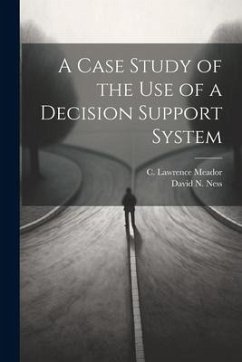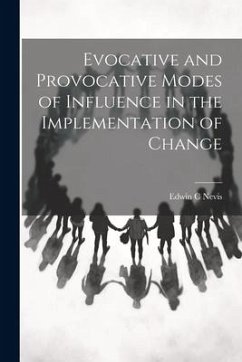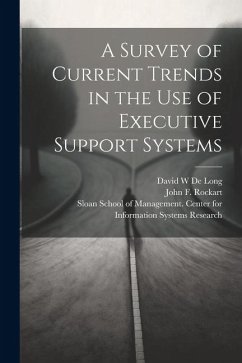
Group Decision Support Systems and Influence Modes

PAYBACK Punkte
9 °P sammeln!
This study examined the effect of Group Decision Support System (GDSS) technology on perceived influence modes. The researcher measured perceived influence modes in two group treatments: GDSS groups and non-GDSS (N-GDSS) mediated groups. Actual groups in both treatments performed judgmental tasks of their own choosing. Group members then completed a survey that measures their perceptions regarding five influence sources: expert influence, influence from legitimate authority, referent influence, reward influence, and coercive influence. The survey also measured the extent to which members perce...
This study examined the effect of Group Decision Support System (GDSS) technology on perceived influence modes. The researcher measured perceived influence modes in two group treatments: GDSS groups and non-GDSS (N-GDSS) mediated groups. Actual groups in both treatments performed judgmental tasks of their own choosing. Group members then completed a survey that measures their perceptions regarding five influence sources: expert influence, influence from legitimate authority, referent influence, reward influence, and coercive influence. The survey also measured the extent to which members perceived an "opportunity to influence" other group members. For each variable measured in both treatment groups, mean scores were calculated from respondents' ratings. Analysis indicated that GDSS technology significantly reduces the amount of influence perceived by group members when compared to members in N-GDSS groups. Results also indicated that there was no significant difference between treatment groups regarding members' perceived "opportunity to influence" other group members. This work has been selected by scholars as being culturally important, and is part of the knowledge base of civilization as we know it. This work was reproduced from the original artifact, and remains as true to the original work as possible. Therefore, you will see the original copyright references, library stamps (as most of these works have been housed in our most important libraries around the world), and other notations in the work. This work is in the public domain in the United States of America, and possibly other nations. Within the United States, you may freely copy and distribute this work, as no entity (individual or corporate) has a copyright on the body of the work. As a reproduction of a historical artifact, this work may contain missing or blurred pages, poor pictures, errant marks, etc. Scholars believe, and we concur, that this work is important enough to be preserved, reproduced, and made generally available to the public. We appreciate your support of the preservation process, and thank you for being an important part of keeping this knowledge alive and relevant.












